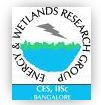 |
Land surface temperature with land cover dynamics: multi-resolution, spatio-temporal data analysis of Greater Bangalore |
 |
|
Ramachandra. T.V 1 and Uttam. K 2 |
| Citation: Ramachandra. T.V and Uttam. K, 2009. Land surface temperature with land cover dynamics: multi-resolution, spatio-temporal data analysis of Greater Bangalore, International Journal of Geoinformatics, Vol 5, No. 3, September, 2009 |
Abstract Bangalore is experiencing unprecedented urbanisation in recent times due to concentrated developmental activities with impetus on IT (Information Technology) and BT (Biotechnology) sectors. The concentrated developmental activities has resulted in the increase in population and consequent pressure on infrastructure, natural resources, ultimately giving rise to a plethora of serious challenges such as urban flooding, climate change, etc. One of the perceived impact at local levels is the increase in sensible heat flux from the land surface to the atmosphere, which is also referred as heat island effect. In this communication, we report the changes in land surface temperature (LST) with respect to land cover changes during 1973 to 2007. A novel technique combining the information from sub-pixel class proportions with information from classified image (using signatures of the respective classes collected from the ground) has been used to achieve more reliable classification. The analysis showed positive correlation with the increase in paved surfaces and LST. 466% increase in paved surfaces (buildings, roads, etc.) has lead to the increase in LST by about 2 ºC during the last 2 decades, confirming urban heat island phenomenon. LSTs’ were relatively lower (~ 4 to 7 ºC) at land uses such as vegetation (parks/forests) and water bodies which act as heat sinks. |